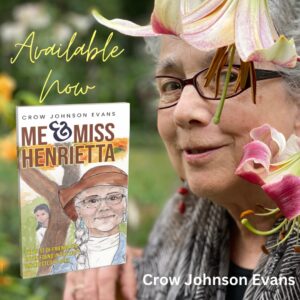In the early 1990s I went to India for the first time. The culture shock was delicious to my senses rather than frightening and foreign. The following story was first published in Flights of Fancy- a collection of short stories, songs, and more.
One bird, deep in a pre-dawn inky jungle, calls. And another, ten feet from me, answers. For a moment, I forget where I am and reach out to touch Arthur. The texture of concrete greets my fingertips, not the warmth of my true love’s shoulder or chest. The overhead ceiling fan whooshes and I remember that Arthur is in Arkansas and I am here, on a second-floor sleeping porch in southern India.
I didn’t need to bring an alarm clock halfway around the world: it’s a good thing I didn’t bother. My limited suitcase space was used for the necessities: toilet paper, two pair of yellow flip-flops, insect repellent, malaria pills, camera, film, and a bag of wrapped candy. Half of my eighteen rolls of toilet paper were destined to be left—along with most of the candy—as house gifts from me, a wide-eyed grinning and grateful foreign guest. Flip-flops are the barrier between my feet, well-callused in the Ozarks, and the streets of India’s big cities and back roads. This morning I’m waking up in a jungle sprinkled with small dwellings, marinated in tropical antiquity. Twenty minutes away is a village with fewer than a hundred people.
“Ah yes, Mum,” the taxi driver said, “Kerala is much being the India Hawaii.”
During the terrifying ride from the airport into the countryside, I mumbled, “I hope it’s much not being my last day on the planet.”
I survived careening along the roads and near misses with cows, kids, cars, goats, carts, motorized rickshaws, and women carrying bundles on their heads. I survived to this isolated place—to enjoy a December predawn as Mother Nature’s orchestra tunes-up and begins her melodious cacophony. The early birds, those two bodacious calling ones, are joined exponentially by others.
Within fifteen minutes, the din spirals in volume and diversity. As I grab the flashlight and begin the search for my handheld tape recorder, a speaker atop a Muslim shrine two miles south of my porch crackles into life and broadcasts the morning call to prayer.
Before I can find the tape recorder, another sound blasts from the north, closer than the first speakers. This sound has a rollicking, neon beat and modern flavor. What I am hearing is popular Indian movie music coming from a ten-by-ten dirt floor dwelling on the narrow path just beyond the gate. A peacock on top of a palm thatch roof joins in. This acoustic confusion is as delicious as a mixture of aromatic spices, ground with a white marble mortar and pestle.
As light slowly filters into the jungle, I can see ruffled pink and red hibiscus blossoms within arm’s reach of my screen-less concrete sleeping porch. Who from my hometown could have imagined two-story-tall hibiscuses blooming in winter? There are breadfruits hanging ten feet up the trunks of their trees. Date palm trees make tall silhouettes while fruit bats fly by in slow motion to the morning sound track—an increasingly competitive mixture of wildly different sounds. I decide that I need a camera to capture this experience. Yes, camera as well as tape recorder.
As the greens begin to look green instead of black or grey, another sound joins the symphony. Ten feet away, my neighbor’s outdoor speaker broadcasts morning sacred songs from the Ashram. Three women’s voices in Malayalam fill the air with Hindu song, joining the birds, movie music, cows and Muslim prayers. I can tell that my favorite singer is there. Her voice is rich, mellow, controlled—a vibrant contrast to the traditionally higher, nasal tones of the older women. The first time I ever heard her voice; I was sitting on the floor, cross-legged behind her and I’d imagined I was floating on the river she sang. This first experience was in Texas, where the music stood unopposed, floating on the summer air, air nearly as hot as that of India’s winter.
Here in India, some could think this morning was an acoustic nightmare. But this clash of texture, tone, and rhythm swirls through my ears and heart with warmth and passion. I’ve spent forty years trying to understand and master the Western musicality of popular folk songs, spiced with Gershwin, funk, soft-rock and fusion.
My snobbery for pitch, harmony, and form dissolves in this one morning on a sleeping porch in India. I realize that no one could perfectly transcribe the natural tones, textures, dynamics, and harmonies I am hearing. I abandon the search for my camera and tape recorder. As I stop fussing around joyful tears cloud my eyes.
The beauty of the composite sound is the sum of tone, intention, and intensity of all of the players. The birds, singing as if their lives depend upon it, hear only their own songs declaring their territories and desirability. The Muslims hear the Truth of their sacred prayers to Allah. The people playing movie music are transported from poverty into the world of unlimited possibly by the exotic images. And the Ashram’s guests and their teacher are reminded by the morning devotional songs—reminded that time is illusion and All is one. They, too, are lifted.
Maybe it’s the jet lag or the culture shock or the unavoidable impact of universal truths. In the moment of this symphony, there is no time—-all is now. The birds, tourists, devotees, aromas, colors, cows, peasants, plants, and prayers are one, caught in the swirl of a natural symphony, a glorious cacophony.
